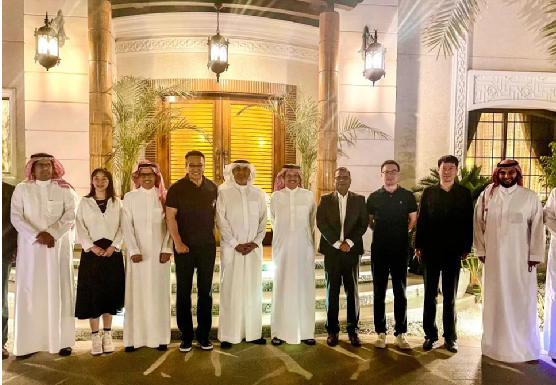TCL Zhonghuan builds a plant in Saudi Arabia to fill the gap in the Middle East PV industry chain
The low carbon energy sector in the Middle East and North Africa is accelerating, with projects worth US$257 billion by 2030, half of which will be solar PV projects.
On May 24, TCL Zhonghuan announced that it had signed a cooperation agreement with Saudi Vision Industries (hereinafter referred to as VI) to jointly establish a joint venture company to invest in the construction of a PV crystal wafer factory project in Saudi Arabia. on June 11-12, during the 10th Entrepreneurs Conference and 8th Investment Seminar of China-Arab Cooperation Forum held in Riyadh, the capital of Saudi Arabia, TCL Wang Shaojian, CEO of Azeus International Business, and his delegation met with the Saudi Ministry of Investment, Ministry of Industry and Mineral Resources and Vision Industries executives to further implement the details of the above joint venture project.
The Saudi factory is scheduled to start in Q4 this year, radiating to four continents
During the meeting with Khalid Al-Falih, the Saudi Minister of Investment, Wang Shaojian said that the crystal wafer project jointly built by TCL Central and VI in Saudi Arabia is planned to start in Q4 this year, and will take into full consideration factors such as land and electricity to reserve space for subsequent capacity expansion. This project will meet the local demand in Saudi Arabia while radiating two major markets in Europe and Africa.
Wang Shaojian and his party met with VI founder family, major shareholders, directors and management
Minister Al-Falih said that Saudi Arabia is determined to build a local value chain and actively supports the TCL Central project, hoping to develop solar energy at the best cost in order to achieve the target of 50% renewable energy by 2030.
Mohammad Abunayyan, Chairman of VI Board of Directors, said that the project is in line with Saudi Arabia’s “Vision 2030” strategy and will help Saudi Arabia maintain its position as a major energy power, and hopes that both sides will work together to make the project a Saudi-based It is hoped that the two sides will work together to make the project a large photovoltaic material manufacturing base based in Saudi Arabia, not only for the local market, but also for the European and North American markets. Crown Prince Salman hopes that in the future Saudi Arabia will be able to export the same amount of green energy as crude oil, and Saudi Arabia is willing to make this ideal blueprint a reality by mutual achievement with Azeus.
How big is the potential of the Middle East PV market?
From 2012-2021, the Middle East’s total installed renewable energy growth rate is 76%, which is lower than the world average of 112%, and progress is relatively slow. According to the International Renewable Energy Agency report, by the end of 2021, the total installed capacity of the Middle East is 24GWh, less than 1% of the global installed capacity. And the Middle East region is mainly tropical desert, almost all areas of solar radiation energy is very high, solar electricity market potential is huge.
According to related institutions, the Middle East will have 50 GWh of photovoltaic power generation by 2030. 20 GWh will be generated in Saudi Arabia alone, 10 GWh in Egypt and the UAE, and a total of 10 GWh in Qatar, Kuwait and Oman. an Arabian Petroleum Investment Company (APICORP) study predicts that the low-carbon energy sector in the Middle East and North Africa is accelerating project activity, with project values reaching $257 billion by 2030, half of which will be solar PV projects.
According to Infolink data, the Middle East imported about 11.4GW of PV modules from China in 2022, a 78% YoY boost relative to 2021, with further growth likely in 2023.
Filling the gap in the PV industry chain in the Middle East
Desert Technologies Factory, part of the Desert Technologies Group, a leading renewable energy solutions provider, has been producing PV modules in the Jeddah Industrial Zone in Saudi Arabia since 2011 and is the first and largest PV module production and export facility in Saudi Arabia and the Middle East. It has successfully exported its products to Egypt, Jordan, North Africa and continental Europe.
The “Made in Saudi” program, which originated from the Saudi National Industrial Development and Logistics Program (NIDLP), aims to stimulate the development of the country’s industry, encourage consumers to purchase local goods, develop and strengthen Saudi non-oil exports to global markets, and support the chain and localization of key components in the renewable energy sector. The Desert Technology factory is one of the first factories to join the “Made in Saudi Arabia” program.
TCL Zhonghuan’s PV crystalline wafer factory in Saudi Arabia fills the gap in the middle and upper reaches of the PV industry chain in the Middle East, perfectly complements the local PV module factory in Saudi Arabia, significantly reduces the cost of solar power in the Middle East, and helps realize Saudi Arabia’s “Vision 2030” strategy.






